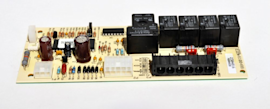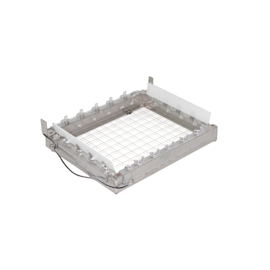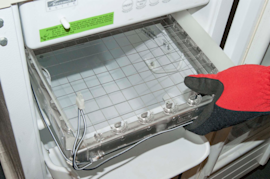Ice maker common questions


These common questions about ice makers are the ones our experts hear the most often from our customers. You might also find the help you need by checking the common symptoms and solutions for ice makers. When you’re ready to make a repair, search your model number to find replacement parts. Sears PartsDirect has the part you need, no matter where you bought your ice maker.
Why won't my ice maker start?
If your ice maker won’t start, make sure the power cord is plugged in all the way. If it’s, check the house circuit breaker for the ice maker outlet and reset the house circuit breaker if it has tripped. If the ice maker is receiving power, the electronic control board or ice storage bin sensor could be defective.
Why is my ice maker making thin ice cubes?
Lack of water going to the evaporator plate causes an ice cube maker to make thin ice cubes. Make sure the drain cap is securely in place in the reservoir. Check the water reservoir for a crack or leak. Check the recirculation pump for problems and replace the recirculation pump if it isn’t pumping water over the evaporator plate properly.
Why does the ice from my ice maker taste bad?
Algae or mold in the ice maker storage bin causes the ice to taste bad; wash it thoroughly and let it dry. Storing food in the ice bin can also cause the ice to taste bad, because the ice absorb odors and taste from food.
How often should I run my ice maker’s clean cycle?
The Cleaning Needed status light turns on when it’s time to clean your ice maker. Run the Clean cycle when the status Cleaning Needed light illuminates or when ice production decreases significantly. The ice maker normally needs cleaning at least every 6 months.
Why won't my ice maker make enough ice?
A dirty or clogged condenser coil reduces the ice maker’s capacity. If the condenser coil is dirty, the evaporator plate won't get cold enough to produce ice properly. Unplug the ice machine and use a vacuum cleaner to remove dust from the condenser coil. Accumulated water deposits on the evaporator plate can also diminish ice production. Run the Clean cycle to remove deposits from the evaporator plate.
Why isn’t my ice maker cutting ice into cubes?
If the ice maker isn’t cutting the ice into cubes, unplug the ice maker and check the cutter grid harness plug to make sure the connection is intact. Look for broken wires on the cutting grid. If the cutting grid is damaged or defective, replace it.
How do I keep ice cubes from clumping together?
If you don’t use the ice from your ice maker regularly, cubes in the ice storage bin melt slightly and refreeze into clumps. Break the clumps of ice with the ice scoop provided. If the clumps are too large to break up, discard the clumps and allow the ice maker to fill the ice storage bin with fresh ice cubes.
Does the ice maker have its own drain pump?
The ice maker has a drain pump that must be connected to a drain hose. Follow the installation instructions to properly install the drain hose on the drain pump.
Why isn’t my ice maker making ice even though it’s running?
If your ice maker is running but won’t make ice, make sure the water supply is turned on. If so, unplug the ice maker and make sure that the drain cap is installed in the water reservoir. Also check for a crack or leak in the water reservoir.
How does an ice maker work?
Water constantly circulates over a freezing-cold evaporator plate to create an ice slab. Water that doesn’t freeze falls into a water reservoir and recirculates over the freezing plate to thicken the slab of ice. When the slab is thick enough, the ice slab is released and slides onto a cutter grid. The grid’s heated wires cut the slab of ice into individual cubes, and the cubes fall into the ice storage bin.
Why is the ice from my ice maker clear?
As water flows over the evaporator plate to form the slab of ice, some of the water freezes on the evaporator plate. Minerals do not freeze into the ice slab formed on the evaporator plate. The minerals continue to recirculate over the slab with the water. The ice is crystal clear because the ice contains no minerals from the water.
How do I add refrigerant to my ice maker?
Adding refrigerant to your ice maker is not a do-it-yourself repair. Recovery and recharge of air conditioner refrigerant is tightly regulated by the Environmental Protection Agency (EPA). Only an EPA-licensed technician should recover, repair and recharge a sealed refrigerant system in your ice maker.
Most common symptoms to help you fix your freestanding ice makers
Choose a symptom to see related ice maker repairs.
Main causes: failing compressor, bad condenser fan motor, faulty drain pump, bad recirculation pump, water supply proble…
Main causes: dirty evaporator plate, untreated water supply, food items being stored in ice storage bin…
Main causes: cracked water supply line, leaky drain line, broken drain pump, cracked water reservoir, leaky ice bin…
Main causes: wiring failure, broken cutting grid, faulty electronic control board…
Main causes: bad electronic control board, water supply problems, faulty recirculation pump, sealed system failure, brok…
Main causes: water supply problems, control board failure, weak recirculation pump, clogged water distributer, faulty cu…
Main causes: bad bin thermistor, condenser fan failure, faulty control board…
Main causes: lack of electrical power, bad power cord, wiring failure, bad control board, faulty bin thermistor, bad eva…
Most common repair guides to help fix your freestanding ice makers
These step-by-step repair guides will help you safely fix what’s broken on your ice maker.

How to replace a freestanding ice maker recirculation pump
If your ice maker isn’t making ice, the pump could be the problem. Here’s how to replace it. …

How to replace a freestanding ice maker electronic control board
When the electronic control board won’t activate the ice maker components, follow these steps to install a new one.…

How to replace a freestanding ice maker cutter grid
When the cutting grid is broken, ice cubes don’t drop into the ice bin. Use the steps in this repair guide to replace a…
Effective articles & videos to help repair your freestanding ice makers
Use the advice and tips in these articles and videos to get the most out of your ice maker.

Learn about all the convenient features on our Sears PartsDirect website that make your parts purchases easier.…

Get answers to frequently asked questions about Sears and Sears PartsDirect.…

See what troubleshooting steps to take with your freestanding ice maker before calling for repair.…